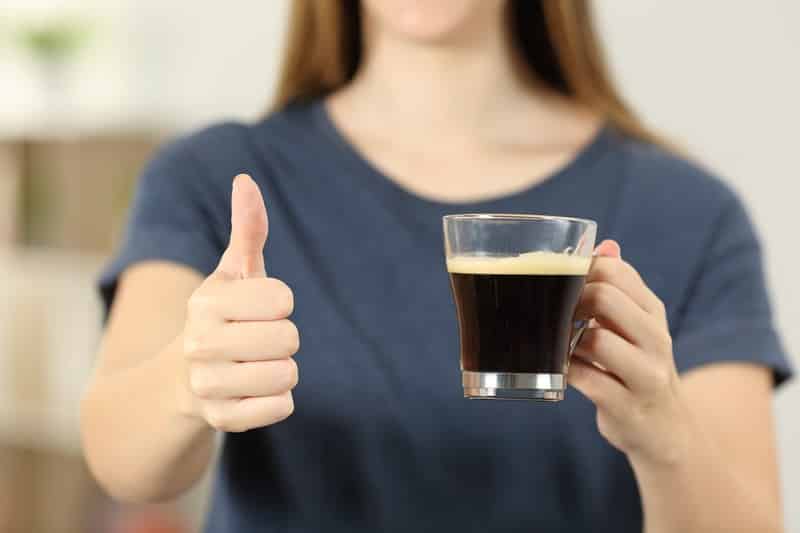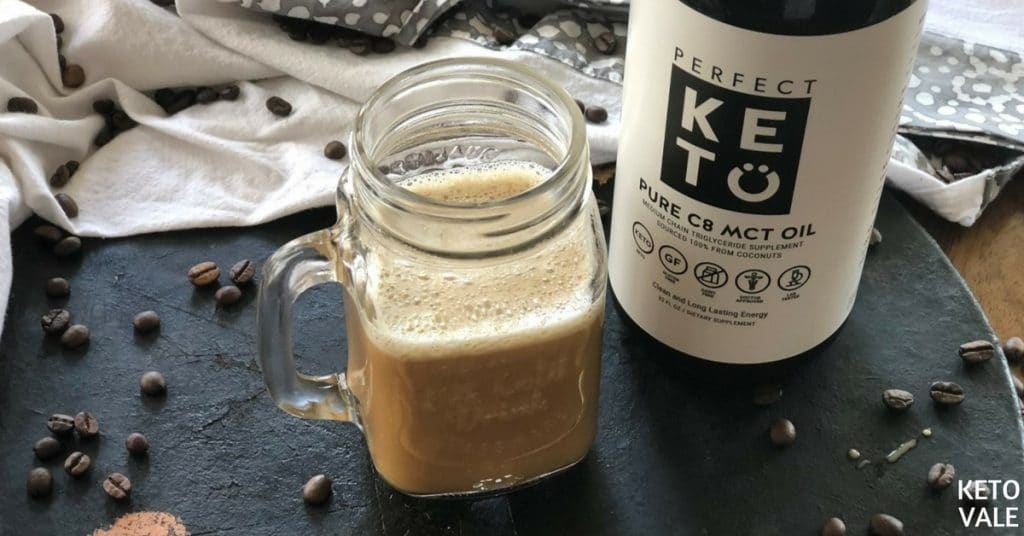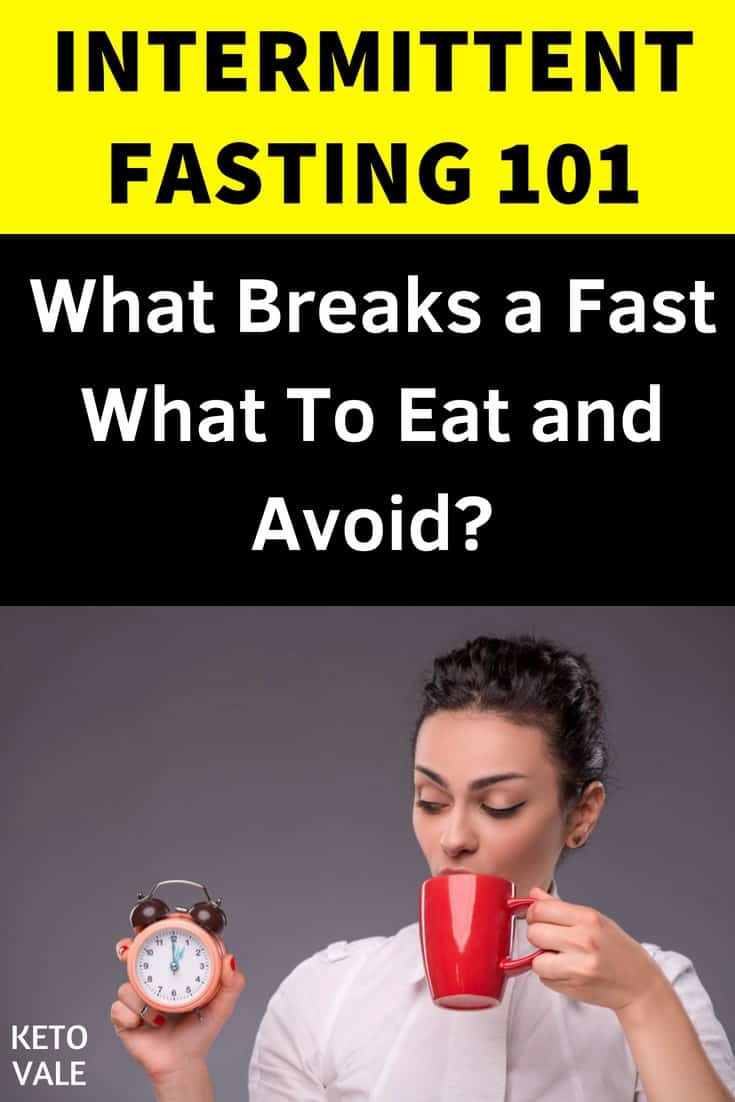We have previously covered the many benefits of intermittent fasting, and it’s indeed a great tool to add to your weight loss arsenal.
Intermittent fasting is often combined with keto, and most people that try this combo report achieving very good results.
A note on fasting
Before we discuss what breaks a fast and what doesn’t, keep in mind that fasting might not be the perfect solution for everyone.
While many people can fast effortlessly for 16 hours (and more), if you feel miserable while doing it, it might just not work for you. You might need to ease your way into it, or do it every other day.
There’s nothing wrong with that – fasting is a dietary strategy that is extremely versatile. You can easily adapt it to your own lifestyle, physical condition, and preferences.
In that sense, if your main goal is to lose weight, sometimes “breaking the fast” with a tiny amount of food (or with some bone broth, for example) that would help you keep going might be a good strategy. We’ll discuss that in more detail below.
Additionally, fasting for women might be different than fasting for men – due to their different hormonal profile, some women don’t do not tolerate fasting so well, or prefer adapting a more flexible approach to it.
If you’re completely new to fasting, your best bet is to start small and introduce fasting into your life little by little.
You can learn more about fasting window and eating window in our keto and intermittent fasting guide.
After these considerations, let’s now look into what breaks a fast, what doesn’t, what is allowed, and what is not.
How Many Calories Does It Take To Break A Fast?
It might seem very simple – eating food or drinking a caloric beverage breaks your fast, while not consuming any calories doesn’t. This means you should consume 0 calories.
However, it also depends on your goal, whether you just want to fast for the purpose of losing weight, or other autophagy benefits (we’ll discuss more below).
If you start researching the topic, though, you’ll find out that there are plenty of different ways to break a fast, and a different reasoning behind each one. This is why we’ve decided to address the issue in detail and see why there are different approaches to fasting, and what the benefits (or limitations) of each one are.
In order to answer this question, you need to figure out why you’re fasting and what are the benefits you’re striving for, as well as for how long you’d like to fast.
Your body alternates between a fasted and a fed state more or less on a daily basis (unless you’re a very frequent eater).
Not eating for longer than approximately 12 hours will mean that you’re into a fasted state, while eating will put you in a fed state.
The fed state is defined as the time frame within which your body processes and absorbs the food you last ate, while the fasted state is when your body is not busy with processing food.
Letting your body be in a fasted state is believed to increase insulin sensitivity, as it needs to produce much less insulin whenever you’re not eating.
That’s also why giving your body enough time between meals is a good idea – although the keto diet is very gentle on insulin, letting your body take a break from digesting is very beneficial.

In general, when fasting, it is best not to consume calories of any kind, in order to stay in a fasted state.
This means sticking to water, black coffee, and unsweetened tea.
Adding salt to your water can be beneficial as it will help you replenish your electrolytes and will not break your fast.
Anything else – fat, heavy whipping cream, an egg, a few almonds, etc. – will break your fast, as energy in the form of food or a drink will raise your insulin (albeit minimally, if the amount is small) and will put you out of your fasted state.
Is that necessarily a bad thing, though?
If adding a small amount of calories will help you pull through a fast that seems otherwise difficult or impossible, it might be an option worth considering, depending on your goals.
Fasting For Weight Loss
Fasting is very helpful when you’re doing it for its weight loss benefits, as it makes eating very structured – you eat during your feeding window and fast the rest of the time.
Simplicity is a huge plus when you’re trying to lose weight. Successful weight loss is a long-term journey, and it is much easier to stick to something that feels easy and intuitive, and that doesn’t require a constant effort to maintain.
Being able to clearly know where you’re standing is extremely helpful. “Have I eaten or drank a caloric beverage in the past 15 (or 14, or 16, or 20, etc.) hours?” is a straightforward question with a yes or no answer.
In this regard, one of the reasons why fasting helps burn fat is that having a limited feeding window makes it easier to consume fewer calories.
Someone who needs to stick to 1500 calories to lose weight might struggle with that amount and feel deprived if eating 3 medium-sized meals. The same person might, however, feel much better about skipping breakfast (or dinner) and splitting their caloric allowance between two bigger meals.
When fasting for weight loss, if a small amount of calories (less than 50 is the general consensus) helps you with adherence, it might be the key to success.
Many people enjoy their morning coffee with a teaspoon of heavy whipping cream in it, but otherwise still skip breakfast – while this might not mean that they’re fasting in the strictest sense of the word, it doesn’t negate the benefits they’re experiencing from it.
Fasting for Autophagy
In order to benefit from the autophagy effects of fasting, you generally need to do it for longer periods of time, such as 24 hours or more.
Autophagy refers to a process that involves the recycling of a potentially dangerous or damaged metabolite in order to keep the body healthy.
Research shows that it can help reduce the risk of some diseases and infections, including neurodegeneration, infectious diseases, cancer, aging, and heart disease (1)(2)(3).
In addition to its weight loss benefits, many people use fasting to induce autophagy to prevent disease or help protect against illnesses.
Autophagy during shorter fasts will be limited, but if you still want to benefit from it, your best bet is to stick to water, black coffee or unsweetened tea.
If you’re fasting for autophagy, this is also where mTOR comes into play. MTOR (short for mammalian target of rapamycin) is an important regulator of cell growth and autophagy, whereas a decrease in mTOR aids autophagy (4).
When you’re fasting, you’re essentially putting your body in a catabolic state, which means that it breaks down tissue (contrary to the anabolic state, which is when your body is growing new cells and maintaining tissues).
Being in a catabolic state might sound undesirable. However, in order to be rebuilt and repaired, your muscles and organs actually benefit from switching between both states (5).
Increased levels of mTOR, however, will inhibit autophagy and will decrease the catabolic effects of fasting. So what raises mTOR levels?
In short, the presence of nutrients in cells increases mTOR levels. Protein and carbs raise mTOR the most, while fat has a modest effect on it, depending on the amount and type of fat (6).
In fact, fat in moderate amounts doesn’t increase insulin significantly. Branched chain amino acids (BCAAs) will also likely raise mTOR levels, especially after exercise (7, 8).
As a general rule, if you’d like to stay in a fasted state and gain the autophagy benefits of fasting and are not doing it only for weight loss, you would need to try doing longer fasts (16-24 hours or more), and you should not be ingesting any calories because any amount of calories will technically break your fast.
If you try longer fasts, proceed with caution, as these can be much more difficult. If you have any medical conditions, speak to a healthcare professional first. Long fasts are not for everyone, and if at any point you feel bad, you should just stop your fast.
If you wish to do fasting for its autophagy benefits, increase fasting times gradually over a longer period of time, in order to make sure you’re in tune with your body.
Do Artificial Sweeteners Break a Fast?
There is a lot of conflicting research on the topic of artificial sweeteners, such as sucralose, splenda, and aspartame. There are so many of them that it would be impossible to give you a straightforward answer.
In general, sweeteners that have 0 or near 0 calories do not have a noticeable effect on insulin and therefore do not break a fast (9).
Sweeteners that contain calories (for example, dextrose), even if they’re less caloric than sugar, will have an effect on your insulin and should be avoided when fasting.
If you’d like to avoid artificial sweeteners, you could try stevia – while the research on its use in humans is still not very conclusive, the amount that you will be using will not significantly impact your blood sugar and insulin levels.
Some other keto-friendly sweeteners are erythritol and monk fruit.

Does Bulletproof Coffee Break a Fast?
Yes, a typical cup of bulletproof coffee (BPC) with butter and MCT oil (or coconut oil) has at least 100 calories, which will break your fast. So it’s best not to drink BPC while fasting.
Does heavy cream break a fast?
Yes, heavy cream will break your fast because it is high in fat and calories.
What To Eat and Drink During Intermittent Fasting
Safe List
- Water
- Black coffee
- Green tea and other pure teas (no added sugar/fruit or flavors such as cinnamon, ginger, lemon, or sweetened with truvia and natural flavors)
- Sparkling beverages (such as carbonated water with no calories and sweeteners)
No-Go List
These foods and drinks will break your intermittent fasting:
- Bulletproof coffee (BPC)
- MCT oil and MCT Powder
- Coffee or tea with milk, heavy cream, creamers, butter, coconut oil or sugar added
- Bone broth and collagen powder
- BCAAs and other protein powders
- Pickles, cheese and other light snacks
- Almond milk and other types of nut milk.
- Smoothies and protein milkshakes
- Fermented foods
- All common whole foods
What might or might not break a fast?
There are things that fall in the grey area, such as diet soda, lemon water, lemon juice, apple cider vinegar, pre-workouts, and exogenous ketones. There is a lot of conflicting information about this out there.
Normally we would avoid water enhancers, sweetened sparkling water, and flavored water such as MiO, Crystal Light, and zevia even though they are zero calories for optimal results.
If you want to play it safe, stick to plain water, black coffee, and green tea. These are the safest options.
Also learn more about what to eat on a fast mimicking diet.
What Should I Eat After a Fast?
It’s a good thing to know what to eat after fasting for 24 hours, 48 hours and up to 7 days. From a general perspective, you should start slowly with something light, such as a salad, boiled egg, soup, or keto-friendly bone broth.

What can I break my fast with?
If you’re coming off a short fast, of 12 to 23 hours, there aren’t any specific rules or guidelines about what to eat after you’re done fasting – you can just eat what you’d usually eat. For example, if it’s time for lunch, just eat your regular lunch with healthy fats such as avocados. You don’t need to take special precautions after shorter fasts.
If you’re doing OMAD (One Meal A Day, where you eat within a one-hour feeding window and fast for the remaining 23 hours), you can just proceed with having your meal.
Some people find it challenging to eat all of their calories within a single hour. You might as well start with your protein to make sure you get enough protein in before you get too full. If you struggle with that, you might choose to do 20-24h fasts every other day (instead of every day).
If you have done a longer fast, however, for example of 24 hours or more, you could experience some mild stomach upset when you come off of it. In that case, it might be a good idea to start with foods that you tolerate well, and to start slow.
You could start with an egg (if you have no sensitivity to eggs, of course) or with some meat, since these are foods that are generally well tolerated by most people. Eat a small serving of whatever you’re having first, and then wait for 30-40 minutes to give your stomach time to restart its normal function.
After that, continue with the rest of the food you were planning to eat for that day, and just go slow. Remember to stay hydrated and to keep your electrolytes in check – throughout the fast and after that.
Our conclusion
Fasting is an excellent way to give your digestive system a break, achieve better weight loss, and if you’re doing it mostly for that reason, you can go ahead and have a splash of cream in your coffee (even if that technically means that you’ll be breaking your fast). It will have some effect on your body, but it will be minimal, and if this helps you with adherence, it might be a viable strategy.
If you’d like to fast for the other health benefits of it, and, most importantly, for autophagy, you should limit yourself to unsweetened coffee, tea, and water, as well as salt if necessary.
Either way, keep it simple and easy to stick to, and the results will follow. If you’d rather not fast every day, or if you prefer doing shorter fasts (of 14 hours, for example), that’s perfectly okay too – it’s a very flexible strategy, and you shouldn’t be afraid of experimenting with it to see what works best for you.
Enjoy this article? Save to your Pinterest for later reference!








